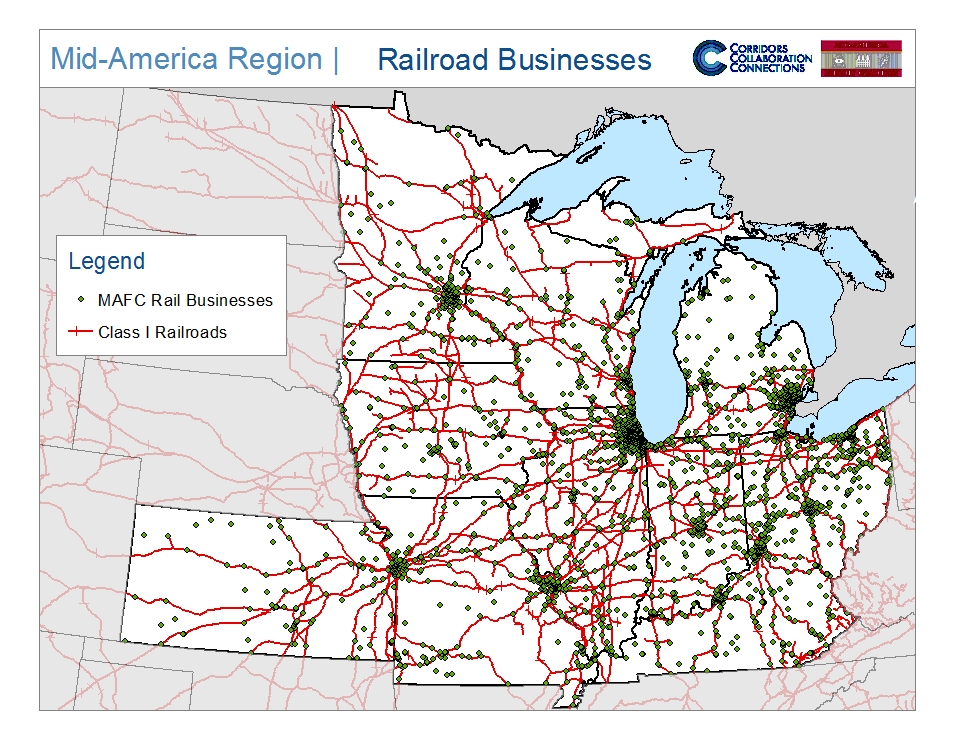Transporting freight by rail offers more origin and destination pairs than maritime transportation and increased efficiency in long haul moves compared to trucking. A single unit train has the carrying capacity of 525 trucks and half that of a 15-barge tow. Similarly, rail can move one ton of freight 413 miles per gallon of fuel compare to 155 for trucking and 576 for inland maritime. Rail is typically used for long-haul routes; the Association of American Railroads reports that in 2011 the average length of haul was 917.2 miles. Figure 1 shows both rail-related industry and the Class 1 rail network. Class 1 railroads are freight railroads with a 2011 operating revenue of $433.2 million or more.
Figure 1: Class I Railroads and Railroad Businesses
Source: Esri Business Analyst, 2011
The total employment for the freight transporting railroad industry is calculated from querying all line-haul and short-line railroads from ESRI’s Business Analyst data set. The query was not able to completely remove passenger railways because of how the North American Industry Classification System (NAICS) is constructed. The total employment reported in Table 1 is an overestimate of the total jobs and businesses that are directly attributable to the transportation of freight via railway.
Table 1: Railroad Businesses and Employment in the MAFC
| State | Railroad Employment | Railroad Businesses | Total State Employment | Total Business Count |
| Iowa | 1,493 | 143 | 1,607,190 | 136,378 |
| Illinois | 9,465 | 632 | 5,884,453 | 476,575 |
| Indiana | 4,665 | 244 | 2,938,335 | 222,320 |
| Kansas | 1,848 | 124 | 1,407,272 | 123,790 |
| Kentucky | 1,595 | 169 | 1,819,898 | 153,924 |
| Michigan | 4,173 | 346 | 4,305,125 | 371,368 |
| Minnesota | 2,763 | 218 | 2,888,004 | 221,993 |
| Missouri | 3,633 | 215 | 2,883,801 | 239,690 |
| Ohio | 6,560 | 442 | 5,634,785 | 413,878 |
| Wisconsin | 4,341 | 183 | 3,063,309 | 244,656 |
| MAFC | 40,536 | 2,716 | 32,432,172 | 2,604,572 |
Source: Esri Business Analyst, 2011
